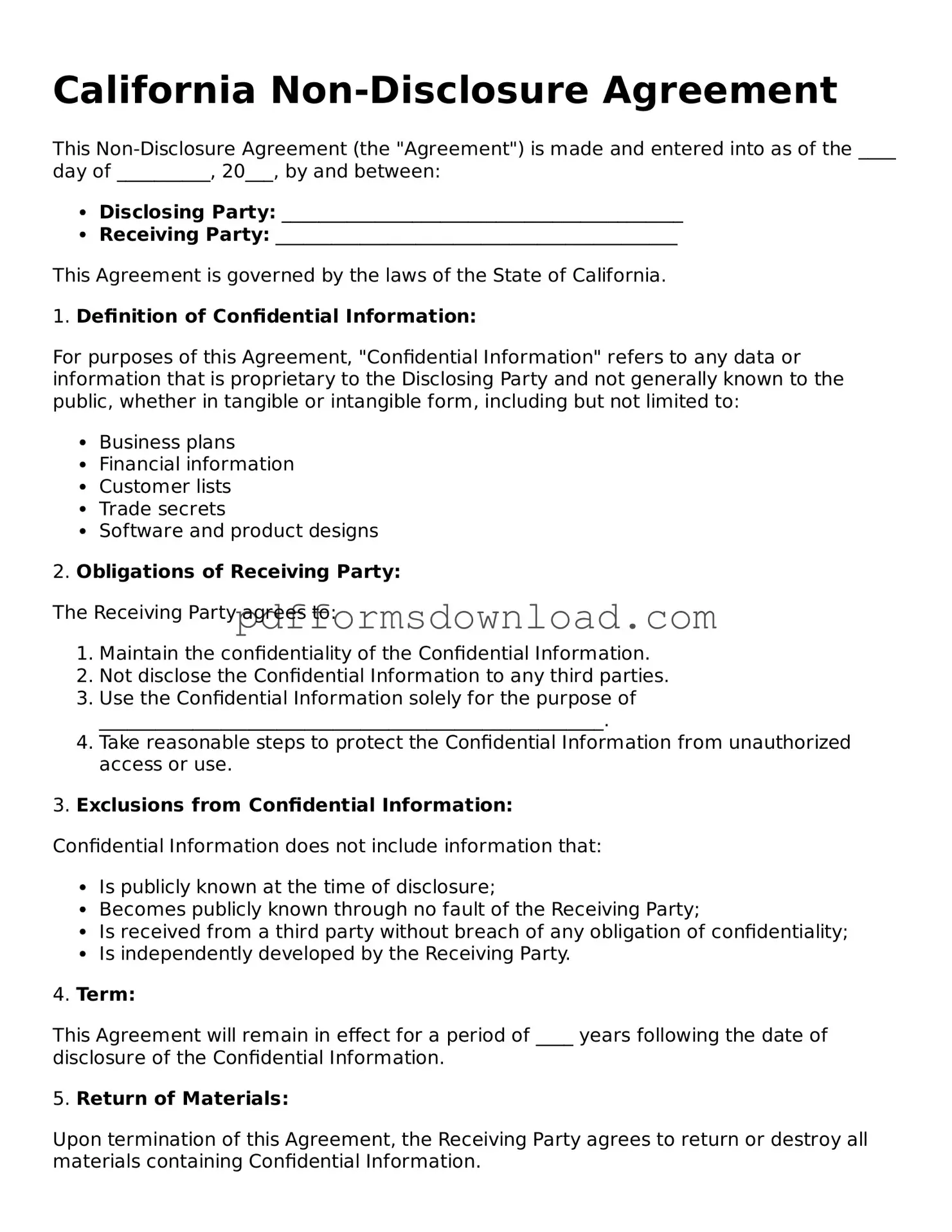What is a California Non-disclosure Agreement (NDA)?
A California Non-disclosure Agreement is a legal contract that protects confidential information shared between parties. It ensures that sensitive information, such as trade secrets, business plans, or proprietary data, remains private and is not disclosed to unauthorized individuals or entities. This agreement is commonly used in business relationships, employment situations, and during negotiations.
Who should use a California NDA?
Any individual or organization that needs to protect sensitive information should consider using a California NDA. This includes businesses sharing proprietary information with potential partners, employees who have access to confidential data, and freelancers or contractors who may handle sensitive material. By implementing an NDA, parties can safeguard their intellectual property and maintain a competitive edge.
What are the key components of a California NDA?
A California NDA typically includes several essential elements. These components are the definition of confidential information, obligations of the receiving party, the duration of confidentiality, and any exclusions from confidentiality. Additionally, the agreement should outline the consequences of a breach and any applicable governing laws. Each of these elements plays a crucial role in ensuring the agreement's effectiveness.
How long does the confidentiality obligation last?
The duration of the confidentiality obligation can vary depending on the terms set forth in the NDA. Generally, parties may agree to maintain confidentiality for a specified period, which can range from one year to several years. In some cases, the obligation may continue indefinitely, especially for trade secrets. It is essential to clearly define this duration in the agreement to avoid any misunderstandings.
Can an NDA be enforced in California?
Yes, NDAs can be enforced in California, provided they meet legal requirements. The agreement must be reasonable in scope, duration, and geographic area. Courts will typically uphold NDAs that protect legitimate business interests and do not impose undue restrictions on the receiving party. However, if an NDA is deemed overly broad or unreasonable, it may not be enforceable.
What happens if someone breaches the NDA?
If a party breaches the NDA, the affected party may pursue legal remedies. This could include seeking damages for any losses incurred due to the breach or requesting injunctive relief to prevent further disclosure of confidential information. The specific remedies available will depend on the terms outlined in the NDA and the nature of the breach.
Is it necessary to have a lawyer review the NDA?
While it is not legally required to have a lawyer review a California NDA, it is highly advisable. A legal professional can help ensure that the agreement is properly drafted, compliant with California laws, and tailored to the specific needs of the parties involved. This can help prevent potential disputes and provide clarity on the rights and obligations of each party.
